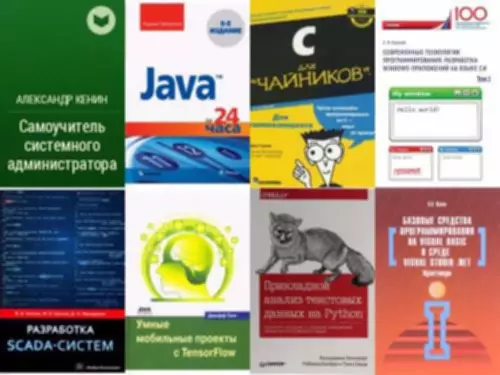What’s A Docker Picture And The Way Is It Completely Different From A Container?
Docker Hardened Photographs (DHIs) include STIG variants which may be scanned againstcustom STIG-based profiles and embody signed STIG scan attestations. STIGs assist be certain that methods are configured securely and consistently toreduce vulnerabilities. They are often primarily based on broader requirements like theDoD’s Basic Purpose Working System Safety Requirements Information (GPOS SRG). Effective picture management requires group consciousness and cooperation. Implement lifecycle policies on your registries to routinely delete old or untagged pictures. Understanding orchestration-specific picture handling helps stop resource exhaustion in manufacturing.

Difference Between Docker Image Vs Docker Container
Thus, a more environment friendly and quicker means was required to change the entire growth lifecycle. Docker pictures function the inspiration for operating containers, which offer an isolated runtime setting for purposes. In conclusion, Docker images are a basic part of containerization, providing a powerful and efficient approach to bundle and run applications in isolated environments. A Docker picture serves as a blueprint or template that contains all the necessary components to run an application. Constructed utilizing a layered approach, every instruction within the Dockerfile adds a model new layer to the picture, allowing for flexibility and modularity.
Managing Image Retention Policies In Production
It hosts both official photographs (maintained by Docker Inc) and neighborhood images (user-contributed). A Docker image is a blueprint or template that contains all the necessary parts to run an utility in an isolated environment. By monitoring your Docker images, you can determine any performance bottlenecks, resource constraints, or security vulnerabilities. This allows you to take proactive measures to optimize your pictures and ensure easy software operation. Every layer builds upon the previous one, creating an entire and functional Docker image.
A Dockerfile is a plain-text script that contains instructions for building the picture. Docker pictures usually are not monolithic entities; they are composed of layers. Each layer represents an incremental change or instruction outlined within the Dockerfile—a script that specifies how an image is constructed. This layered structure is what makes Docker images extremely efficient and portable. Docker containers are lightweight, requiring minimal cupboard space and assets compared to traditional digital machines, permitting for more efficient useful resource utilization. The docker push command transfers a Docker picture out of your local machine to a registry, corresponding to Docker Hub or a personal one.
A Docker picture is a file used to execute code in a Docker container. Docker images act as a set of instructions to construct a Docker cotainer, corresponding to a template. Docker Pictures are usually saved in container registries like Docker Hub. Builders can pull these photographs to their local setting for improvement and testing.
- For Machine Learning lovers, Docker supplies a TensorFlow Image, making it simple to set up a growth setting for constructing and deploying Machine Learning models.
- The Docker architecture leverages this for storage optimization and sooner deployment.
- Safety Technical Implementation Guides(STIGs) are configuration standards publishedby the us
- Developers can create a MySQL container with only a few commands, and the picture comes pre-configured with default settings.
Solomon Hykes, Docker’s founder, established this distinction to balance open contribution with high quality requirements. For production environments, official photographs or internally vetted photographs are strongly beneficial for application portability and safety. These instruments help with image cleanup and debugging deployment issues associated to container isolation or dependency management. Docker namespace and repository tag conventions assist arrange images logically.

Capturing Container State: Creating Custom Docker Photographs By Way Of Practical Modification
Understanding these tools provides you a clearer picture of how containers behave and the means to debug or handle them successfully. You’ll see the output from that process, and you’ll work together with it if it accepts input. In Contrast To exec, attach doesn’t start something new, it simply https://deveducation.com/ hooks into what’s already working. When you launch a new container from the same picture, it’ll start from scratch. An image is a static definition, whereas a container is a dynamic working instance of the app. This temporary guide provides you with simple solutions to Docker pictures vs containers.
The concept of Containerization has entirely modified the way in which an application is built, developed, packaged, monitored, examined, and deployed in the manufacturing environment. Best practices for Docker image administration embrace preserving photographs lightweight, leveraging caching, tagging and versioning pictures, and often updating images for safety. In the following part, we’ll delve into the process of constructing Docker pictures, exploring the varied strategies and finest practices for creating efficient and secure images. Understanding this process is important for harnessing the complete potential of Docker and leveraging its benefits for utility development and deployment. A Docker container is a live, running occasion of a Docker picture.
Leveraging Multi-stage Builds To Reduce Back Image Measurement
This relationship between images and containers is a key aspect of Docker’s structure. Docker is the leading open-source container service provider that has ruled the entire market since its inception. It’s straightforward to learn and makes the development and deployment of purposes why do we need docker a piece of cake. Operating containers with Docker images supplies an isolated runtime setting for purposes, making it simpler to deploy and scale them. Monitoring Docker photographs, debugging any issues that will arise, and cleaning up unused photographs help optimize efficiency and keep a wholesome container infrastructure. Running containers offer quite a few advantages, including scalability, portability, and useful resource efficiency.
Before pushing an image, guarantee that you’ve signed in to the registry with the « docker login » command. The docker tag command creates a brand new tag for an present Docker image. Tags let you label and reference multiple versions of an image. This command is incessantly used before importing a picture to a registry underneath a unique tag.
Each Docker and OpenShift function containerization instruments, each with its own set of strengths and weaknesses. Delve into their main variations to make well-informed business selections. As Soon As an utility is packaged into a Docker Image, it turns into agnostic to the underlying infrastructure and working system. In this weblog, we’ll understand the world of Docker Pictures, their work, and the benefits they convey to the Software Improvement course of. Whether Or Not you’re a seasoned developer or only a newbie with Docker, this comprehensive weblog will allow you to answer, “What is a Docker Image? ” It’ll help you explore its structure, creation course of, and advantages.

Laisser un commentaire
Rejoindre la discussion?N’hésitez pas à contribuer !